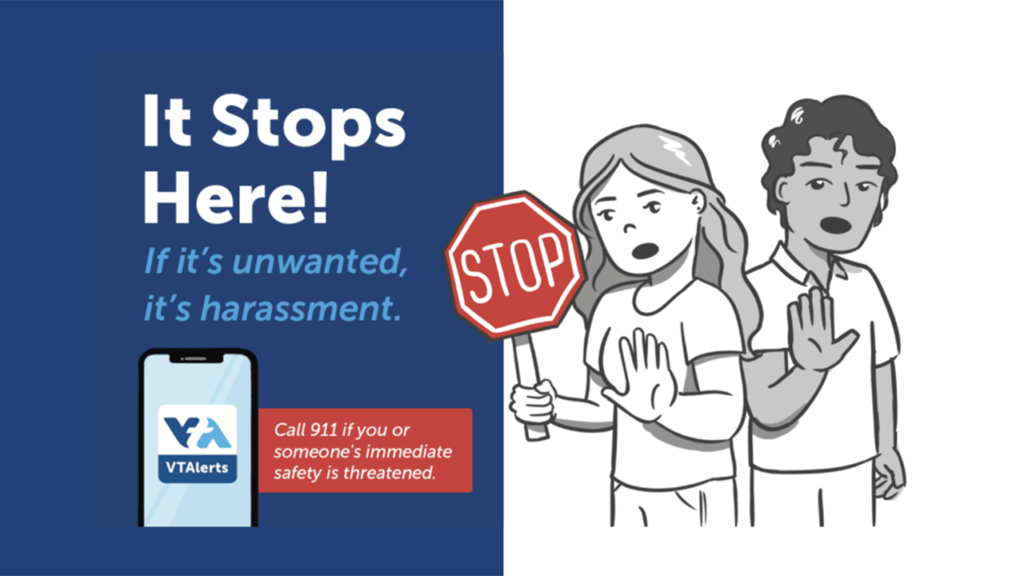
Transit Briefs: TTC, Santa Clara VTA
Written by Marybeth Luczak, Executive Editor
The Canadian Union of Public Employees (CUPE) Local 2, which represents 661 streetcar overhead and subway signal maintainers and others at TTC, voted in favor of a strike mandate on Feb. 8. (TTC Photograph)
Communications, electrical and signal workers at Toronto Transit Commission (TTC) vote in favor of a strike mandate. Also, Santa Clara Valley Transportation Authority (VTA) launches an anti-harassment campaign.
TTC
The Canadian Union of Public Employees (CUPE) Local 2, which represents 661 streetcar overhead and subway signal maintainers and others at TTC, voted in favor of a strike mandate on Feb. 8. The parties have been negotiating a collective agreement since 2022 and talks continue, TTC reported Feb. 9. The previous agreement expired in March 2022.
“We love working at the TTC,” said Sumit Guleria, President CUPE Local 2. “We’re huge supporters of public transit. But at the same time the cost of living in Toronto has skyrocketed. The reality is that we’re bleeding workers because other employers offer significantly better wages.”
According to the union, more than 99% of members voted in favor of strike action “if it is necessary to get the TTC back to the negotiating table with an offer that addresses the rising cost of living, the reality that the workers have not had a freely negotiated contract in more than a decade, and that removes a list of concession demands the employer is making.”
CUPE Local 2 said the vote was conducted by in-person balloting at a single location in Toronto. More than 88% of the local’s 661 members came and voted.
TTC CEO Rick Leary released the following statement on Feb. 9: “While members are technically in a legal strike position now, both CUPE and TTC representatives remain at the bargaining table with the intention of reaching a negotiated settlement without the need for job action.
“Last November, the TTC Board approved a bargaining mandate. We’re committed to reaching an agreement that is fair to Local 2 employees while being affordable for the taxpayers of Toronto.
“In the wake of a 2023 court ruling, this is the first time in nearly 13 years any unionized TTC employees would be able to take job action, up to and including a work stoppage. Again, our hope is that Local 2 remains at the table and its members do not initiate job action.
“I want to assure everyone that we have contingency plans in place, and we will keep everyone advised of them once we know what Local 2 decides to do. Our contingency plans are designed to allow us to preserve as much service as possible while also respecting the rights of this group of employees. The plans also take into consideration the ability of other employees to do their jobs during a labor disruption and how we would accommodate them.
“My top commitment remains the safety of our employees and customers, and delivering reliable service without compromise. However, I also believe that any job action could have an impact on the TTC’s ability to deliver full service without disruption.
“The TTC values the challenging work all our 17,000 employees do every day to deliver safe and reliable service to millions of riders every week—the employees in Local 2 are an important part of our operations.
“I am committed to keeping our customers and employees apprised of any changes related to these negotiations in a timely manner.”
The TTC website is providing updates.
Santa Clara VTA

Santa Clara VTA is launching the “It Stops Here!” campaign to reduce the incidents of harassment and alert potential offenders that harassment is not tolerated at the transit agency.
“At VTA, there no place for harassment, whether on our vehicles, at stops, at stations, or anywhere,” it reported Feb. 8. “Safety and security are core values at VTA, and we are committed to a safe, harassment-free transit experience for all our riders at all times.”
The campaign is focused on educating the public on codes of conduct like “No staring, no touching, no forcing conversation, etc.” and how harassment can be stopped. Posters that aim to raise awareness about the issue of harassment in public spaces are being deployed on light rail vehicles and buses in addition to social media and on the VTA website.
“We understand that sometimes people may not report an incident because they think it isn’t severe enough or won’t be taken seriously,” VTA said. “However, if you see something, say something. Reports will help the police and VTA know where and when the incidents occur so we can put measures in place to prevent them. Reporting incidents also means that the police can investigate them, and those offenders can be identified and caught.”
The agency said the following are some of the things riders can report:
- Unsolicited sexual gestures or comments of a sexual nature (catcalling).
- Stalking or leering.
- Watching pornography or other explicit content in public areas.
- Flashing/exposure of intimate body parts.
- Sexual assault (unwanted touching).
- Rape.
- Intrusive verbal interactions.
If riders experience sexual harassment, Santa Clara VTA said they can take the following actions:
- If you are riding light rail, inform the operator at the next stop or press the button located near the door to talk to an operator, and if you are riding a Santa Clara VTA Bus, notify the operator while on board.
- If you are waiting at a station or bus stop, call 911 or report the issue using the VTAlerts app.
- Text (408) 610-1440.
- Report a Problem Online.
The “It Stops Here!” anti-harassment campaign is “an ongoing effort to change the culture of public transit in a way that improves the commuting experience for everyone,” the transit agency said. Riders who are victims or witnesses of harassment on Santa Clara VTA are encouraged to “speak up, report, and let others know that if it’s unwanted, it’s harassment.”



